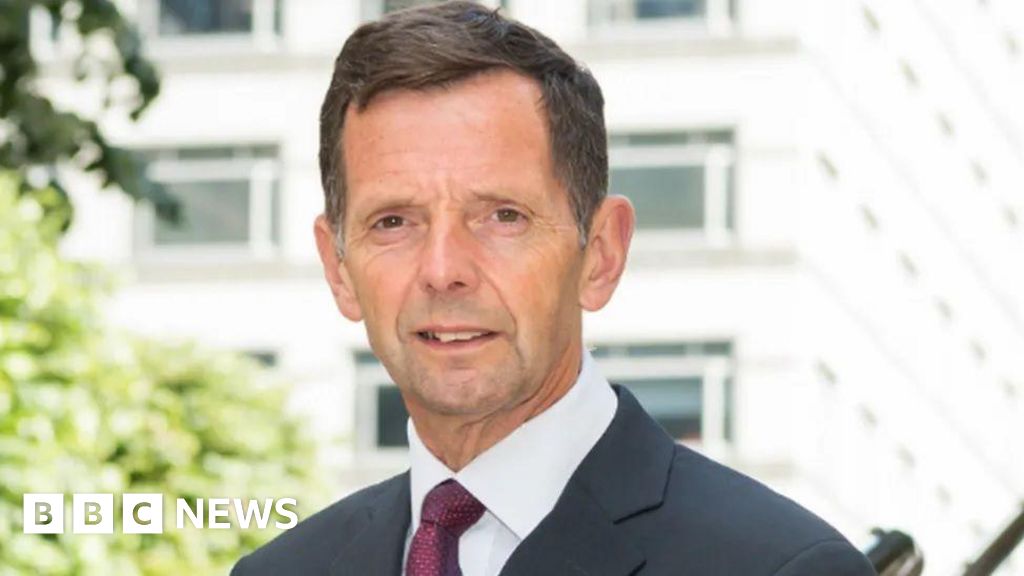Principals’ Dialogue: Investment in STEM to define Kenya’s development in next decade
Kenya school heads have been urged to prioritize investments in Science, Technology, Engineering, and Mathematics (STEM) education to build and retain science skills in the country. Centre for Mathematics, Science and Technology Education in Africa (CEMASTEA) Chief Executive Officer (CEO), Mrs Jacinta Akatsa noted that the demand for STEM workers is high throughout the world, […] The post Principals’ Dialogue: Investment in STEM to define Kenya’s development in next decade first appeared on KBC.

Kenya school heads have been urged to prioritize investments in Science, Technology, Engineering, and Mathematics (STEM) education to build and retain science skills in the country.
Centre for Mathematics, Science and Technology Education in Africa (CEMASTEA) Chief Executive Officer (CEO), Mrs Jacinta Akatsa noted that the demand for STEM workers is high throughout the world, adding that STEM occupations are expected to grow twice at the rate of all other occupations in the next decade.
Ms Akatsa indicated that more effort should go towards fostering interest in STEM subjects and investing in the appropriate tools and technologies to improve the quality of teaching and learning in these subjects.
Addressing head teachers drawn from 103 STEM schools across the country during a consultative forum at CEMASTEA headquarters at Karen in Nairobi, the CEO pointed out that the curriculum that is coming up in Kenya anticipates that 60 percent of the students in Senior Schools will transition to STEM pathway as they progress.
The Centre for Mathematics, Science and Technology Education in Africa (CEMASTEA) was established in 2004 to provide In-Service Education and Training (INSET) for mathematics and science teachers in Kenya and Africa.
The Centre was established to capitalize on the gains made under the Strengthening of Mathematics and Science in Secondary Education (SMASSE) that began in 1998 as a pilot INSET project.
Ms Akatsa noted that the mandate of CEMASTEA is continuous Teacher Professional Development (TPD) in Mathematics and Science Education (TPD-MSE).
“The vision of the centre is excellence in Teacher Professional Development in Africa and the Mission is to transform teaching by continuously developing competencies for effective curriculum delivery and improved quality of education,” the CEO pointed out.
She stated that in line with Kenya’s Vision 2030 of providing globally competitive quality education, training and research to her citizens for development and individual well-being, CEMASTEA endeavors to improve the quality of STEM education in Kenya.
“The purpose is to improve the quality of teaching mathematics and science education by enhancing pedagogical skills of teachers which in turn is expected to help young Kenyans in schools develop and acquire relevant core competencies such as communication and collaboration, critical thinking and problem-solving, creativity and imagination, citizenship, self- efficacy, digital literacy and learning to learn,” she pointed out.
She indicated that one unique aspect of STEM is its role in helping to improve Kenyans’ well-being as individuals and society as a whole, not only through improvements in fields such as technology and medicine but also as a stimulus for promoting improvements in the community and beyond.
Mrs Akatsa said the center is equipping public schools with STEM teaching kits which include desktop computers, chemistry equipment and three mathematics problem-solving books titled ‘How to solve problems, ‘Mathematical problem solving’ and ‘Problem-solving strategies’.
She reiterated CEMASTEA’S initiatives aimed at establishing a strong foundation in STEM education and addressing inequalities in the education system.
“There’s also a need for teachers to create communities of practice to deliver quality STEM education. Mentorship and guidance in STEM fields is one of the fastest-growing areas to get young people interested in educational opportunities and global competitiveness. This will minimize the dilution of the talent pipeline that continues to hurt the economy,” she explained.

CEMASTEA board chairman Dr. Paul Mutisya stated that they were spearheading efforts to bolster the implementation of the Competency-Based Curriculum (CBC).
Through training and capacity building for Junior Secondary School (JSS) teachers, Dr Mutisya announced that the state agency has introduced a community of practice (CoP) model to enhance collaboration and knowledge sharing among JSS teachers and learners to ensure the success of the CBC.
CoP refers to a group of people who share a common concern, a set of challenges, or an interest in a topic. They come together to fulfill both individual and group goals.
According to the chairman, the concept is critical in addressing gaps in curriculum implementation, with teachers set to learn from one another and collectively deliver expected results.
“The idea is to help teachers work as a community. The model promotes peer learning, exchange of best practices, and collaborative problem solving, providing a platform for teachers to share insights, resources, and strategies for delivering the CBC effectively.
As a result, teachers are able to jointly study and interpret curriculum designs and other materials, develop plans and learning materials, and implement lessons together.
The collegiality, he said, enables teachers to use locally available resources to impart knowledge to learners.
Dr. Mutisya said through the advocacy efforts, CEMASTEA aims to establish vibrant CoPs at all Junior Schools across the country for improved learning outcomes.
“CBC emphasizes learner-centered strategies. Therefore, we feel that when teachers work together, they are likely to gain from one another. That way, they feel more confident, and going forward, this is going to enhance the achievement of positive learning outcomes,” he said.
The CoP, he added, can be between teachers of the same school, and teachers of the same learning areas from different schools in the same school or locality.
The learning experiences, he said, can be face-to-face, online, or blended, with teachers encouraged to take advantage of social media platforms like WhatsApp.
This, he said, will see the establishment of regional clusters and subject-specific clusters to enable teachers to deploy innovative pedagogical approaches to address the nitty-gritty of the CBC curriculum.
CEMASTEA, he added, has developed a portal through which the teachers can share their challenges so that targeted trainings are carried out.
CoP, he said, can also be between students of the same school, neighboring school, or students pursuing the same learning area so that they share their interests and learn from one another.
“If learners can work as a community given that they have the same expectations from the curriculum, then we expect them to not only pursue their interests but to excel as well,” he said.
This, he observed, will go a long way in assisting the learners to identify their right pathways as they move to senior school.
Patrick Kogolla, deputy director of Training at CEMASTEA, said the focus is on enhancing teachers’ Pedagogical Content Knowledge (PCK) to support the transition of 60 percent of Junior Secondary learners to the STEM pathway in Senior Schools.
He stressed the importance of strengthening teaching to encourage more students to opt for STEM subjects.
Mr. Kogolla observed that Science, Technology, Engineering, and Mathematics are tools for economic development, both nationally and globally.
He stated that equipping students with technical, analytical, and scientific skills helps them to become more economically productive.
“It also improves their quality of life, reduces inequities and helps in alleviating poverty which is in line with Sustainable Development Goal 1. Furthermore, STEM has the potential to enhance innovative entrepreneurial capacities and opportunities for young Kenyans who are agents of change,” observed Mr Kogolla.
Kiambu High School Principal Mr. Michael Kinyua called for sustained mentorship initiatives by STEM schools and CEMASTEA in a bid to cultivate interest in STEM among learners.
Kinyua observed that mentorship programs will help to create awareness about available gainful opportunities in the fields of Science and Technology.
On his part, the Coordinator of STEM at CEMASTEA Mr. Kizito Makoba challenged teachers to inspire and drive innovation among students with a view of seeking practical and sustainable solutions to emerging crises like Climate change.
The post Principals’ Dialogue: Investment in STEM to define Kenya’s development in next decade first appeared on KBC.
What's Your Reaction?

































/cdn.vox-cdn.com/uploads/chorus_asset/file/25517480/2023_Amazon_Fire_HD_10_Lifestyle_Press_Image_2.jpg)
/cdn.vox-cdn.com/uploads/chorus_asset/file/24110035/226347_Kindle_SVasani_0004.jpg)



















































![Netflix Horizon Zero Dawn TV Show Reportedly In Trouble [Update]](https://i.kinja-img.com/image/upload/c_fill,h_675,pg_1,q_80,w_1200/cc9a42c0341c691ff31e3f12daeddc34.jpg)





























